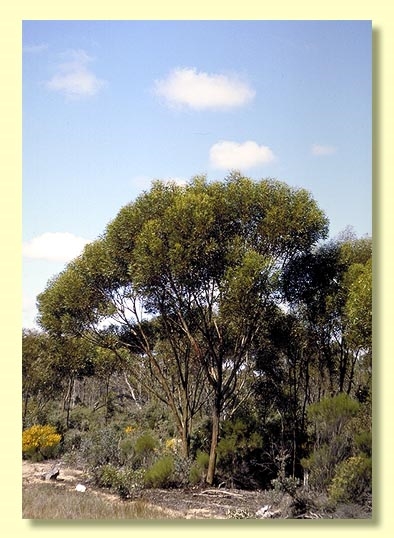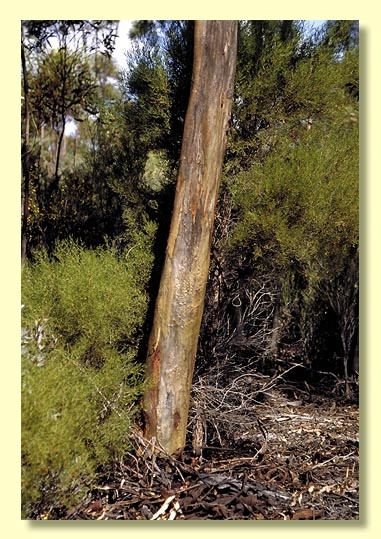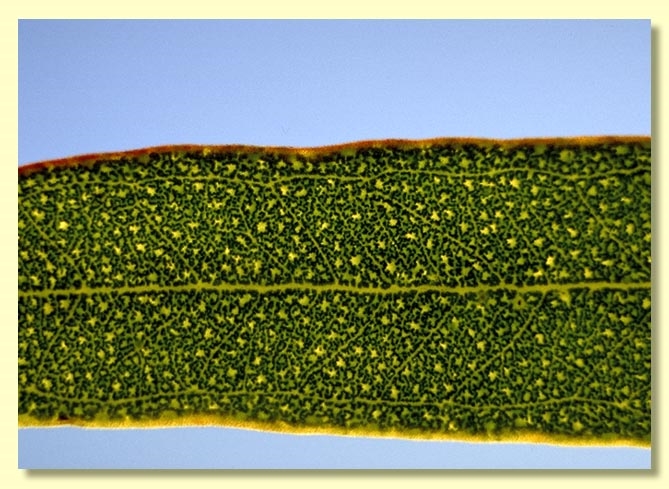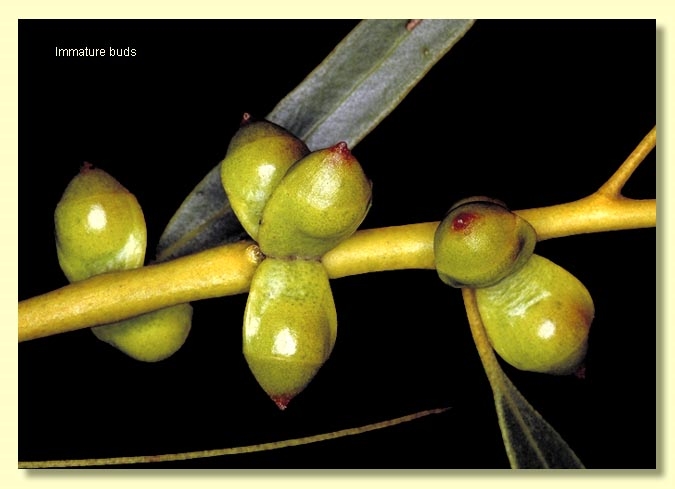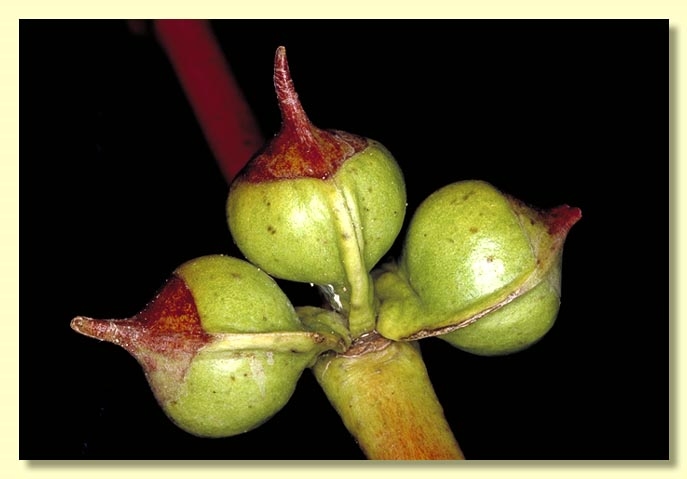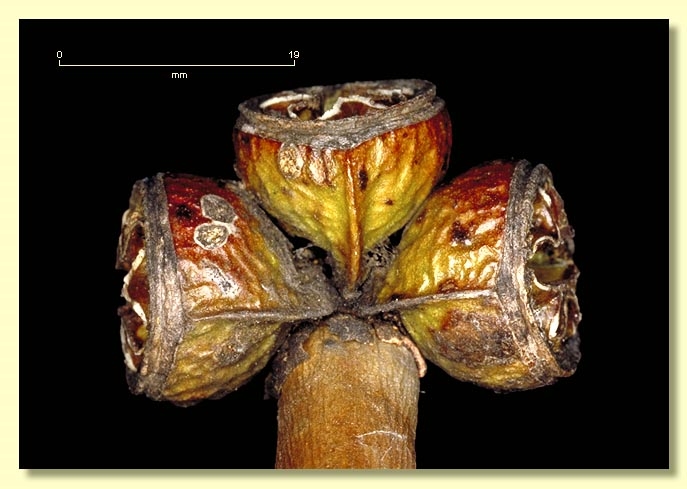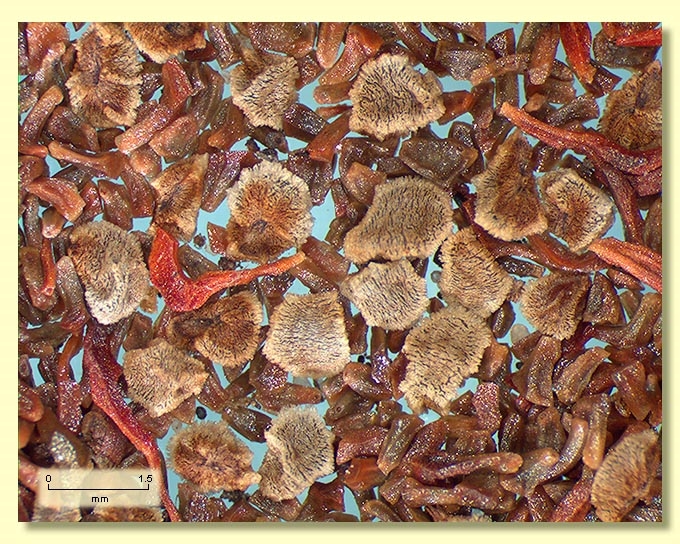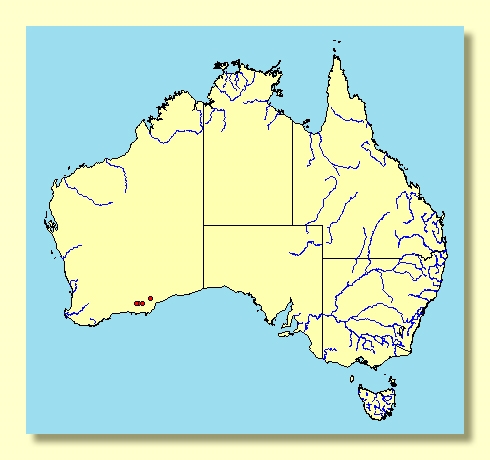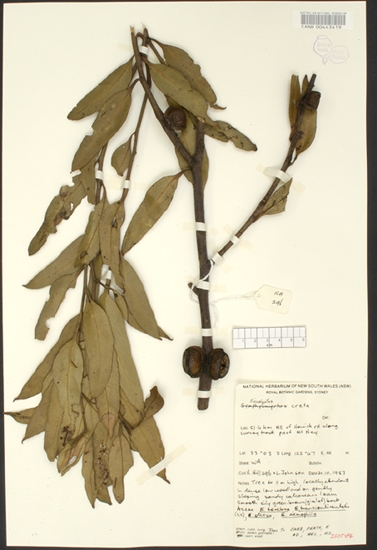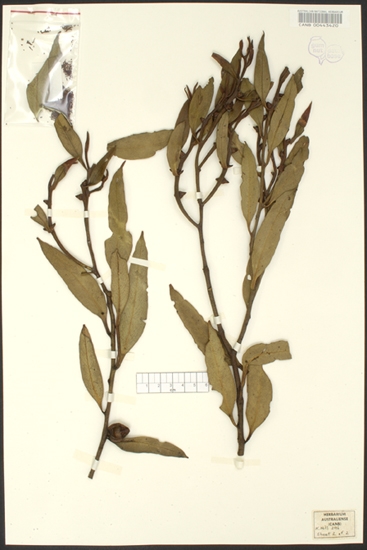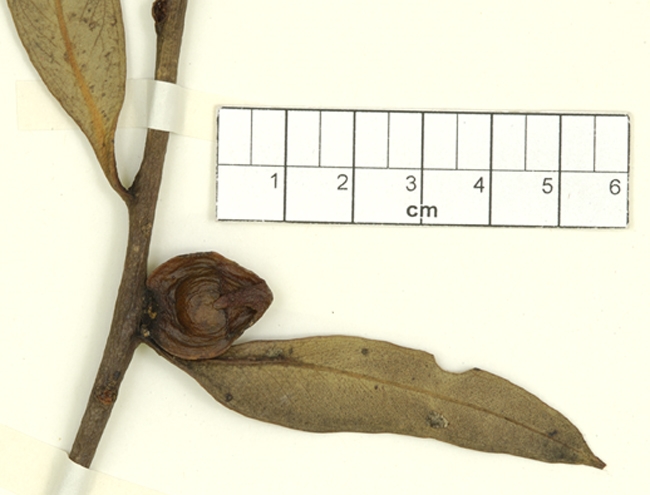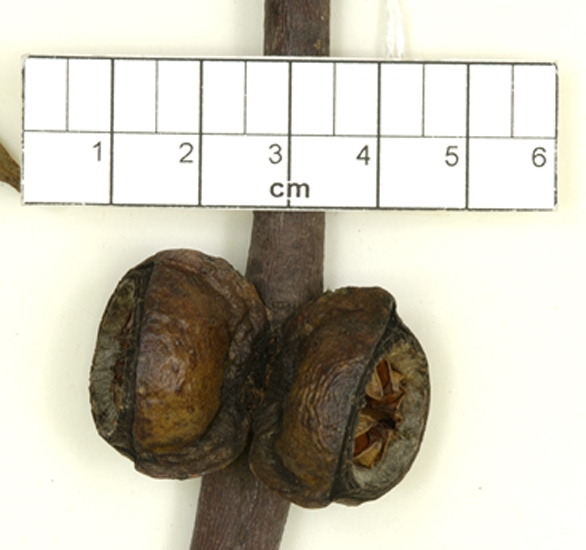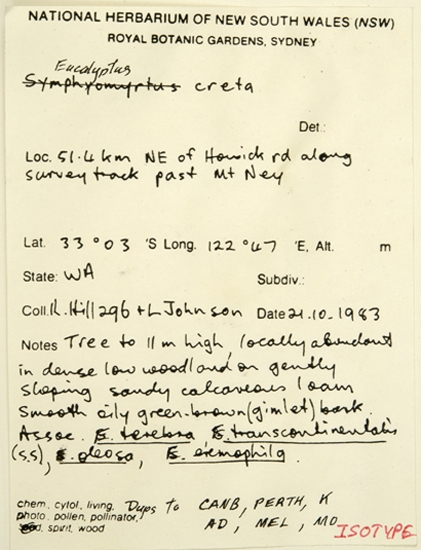Euclid - Online edition
Eucalyptus creta
Eucalyptus | Symphyomyrtus | Bisectae | Glandulosae | Contortae
Bark smooth throughout, shiny, grey over bronze to greenish brown.
Branchlets with oil glands in the pith.
Juvenile growth (coppice or wild seedling to 50 cm tall): not seen.
Adult leaves coarse, thickish, alternate, petioles 0.8–1.8 cm long; blade lanceolate, (4.7)5.5–13.2 cm long, (0.8)1.2–3.5 cm wide, base tapering to petiole, margin entire or distantly and shallowly scalloped, apex pointed, side-veins greater than 45° to midrib, reticulation moderate to dense and broken, intramarginal vein close to margin, oil glands island, irregular in shape.
Inflorescence axillary unbranched, peduncles absent; buds 3 per umbel, sessile. Mature buds ovoid (1.5–2.2 cm long, 1.4–2 cm wide) basally flattened and expanded forming a wing on either side of the hypanthium extending to the join with the operculum, scar present, operculum beaked or rarely conical, stamens inflexed, anthers oblong, versatile, sub-basifixed, dehiscing by longitudinal slits, style long and straight, stigma blunt, locules usually 5 (rarely 4 or 6), the placentae each with 8 vertical rows of ovules. Flowers white.
Fruit sessile or shortly pedicellate (pedicels 0–0.1 cm long), broadly and shallowly cupular to hemispherical with 2 wings extending from base to rim, 0.8–1.3 cm long, 1.5–2.8 cm wide, disc level or slightly descending, valves usually 5 (rarely 4 or 6), at rim level or exserted.
Seeds beige to brown, 1–2 mm long, ovoid or flattened ovoid to cuboid or polygonal, dorsal surface deeply, closely and narrowly fissured, margin toothed, hilum ventral. (Seedcoat often referred to as being honey-combed.)
Cultivated seedlings (measured at ca node 10): cotyledons Y-shaped (bisected); stems rounded in cross-section, slightly scabrid at least until node 9; leaves always petiolate, opposite for 4 to 6 nodes then alternate, ovate-lanceolate, 4.5–6 cm long, 1.5–2 cm wide, dull, green to grey-green, lamina slightly scabrid.
Flowering time unknown.
A mallet of restricted subcoastal distribution in Western Australia, north of Esperance, on flat clayey sites. The trunk is smooth, grey and coppery, the adult leaves glossy green and the sessile winged buds are formed in threes.
Eucalyptus creta belongs in Eucalyptus subgenus Symphyomyrtus section Bisectae subsection Glandulosae because the buds have two opercula, the cotyledons are bisected and the branchlets have numerous oil glands in the pith.
Within this large subsection E. creta belongs to a small well known group, the gimlets (series Contortae), notable for the slender fluted, twisted shiny colourful trunks. The gimlets are further recognised by very irregular island oil glands in the leaves and irregularly and deeply fissured seed-coats.
There are only two species in series Contortae with buds in threes, E. diptera and E. creta. The only difference between them is the size of buds and fruits—E. creta has buds 0.9–1.2 cm diameter and fruit 1.5–2.8 cm diameter, whilst E. diptera has smaller buds and fruit. The buds and fruit of both species are two-winged. All other gimlets have buds in sevens.

